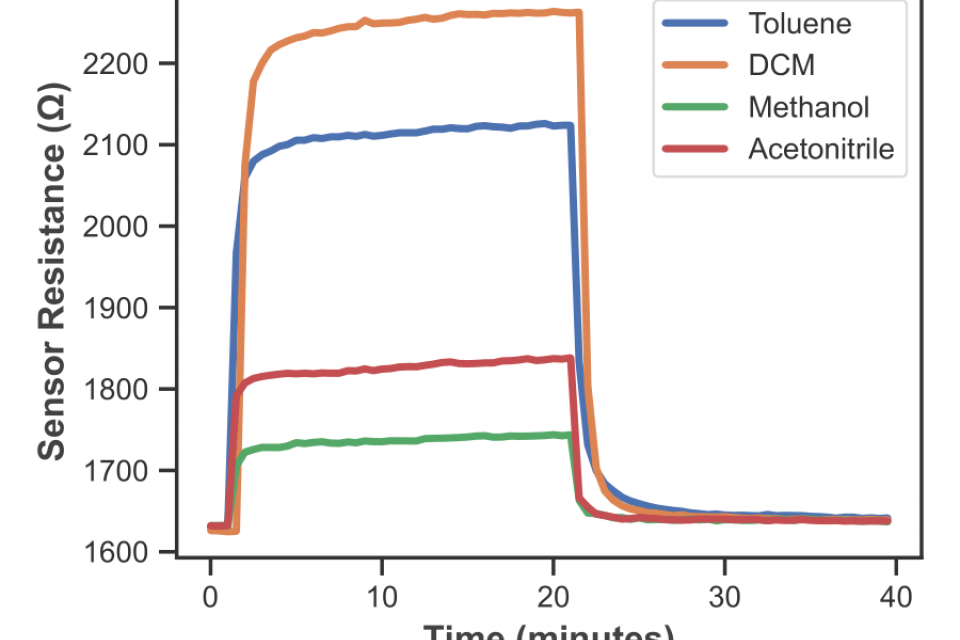Datasets
Standard Dataset
Multi-Task Spiking Neural Network for Simultaneous Vapor Recognition and Concentration Estimation
- Citation Author(s):
- Submitted by:
- Pedro Locatelli
- Last updated:
- Fri, 01/17/2025 - 09:38
- DOI:
- 10.21227/xjr3-q393
- Data Format:
- License:
 113 Views
113 Views- Categories:
- Keywords:
Abstract
This dataset contains 2,016 sensor responses collected from an array of conductive carbon-black polymer composite sensors, exposed to four target analytes—acetonitrile, dichloromethane (DCM), methanol, and toluene—at nine distinct concentration levels ranging from 0.5% to 20% P/P₀. Each sensor was exposed to the analytes for 20 minutes, followed by 20 minutes of nitrogen flushing to restore the baseline. The data consists of 80 time points (one every 30 seconds) per response, with each time point representing the sensor's resistance to a specific analyte concentration. This dataset is designed to support pattern recognition tasks for gas sensor arrays in applications such as electronic noses. More details can be found in the article "Multi-Task Spiking Neural Network for Simultaneous Vapor Recognition and Concentration Estimation".
1. Data Overview
This dataset contains raw resistance measurements collected from an array of conductive carbon-black polymer composite sensors. The sensors were exposed to four target analytes—acetonitrile, dichloromethane (DCM), methanol, and toluene—at nine distinct concentration levels (0.5% to 20% P/P₀). The responses were recorded at 30-second intervals over a 40-minute period for each analyte exposure.
2. Key Features
- Analyte: The chemical compound exposed to the sensor (acetonitrile, dichloromethane (DCM), methanol, or toluene).
- Concentration: The analyte concentration level in % P/P₀ (0.5%, 1.0%, 1.5%, 2.0%, 2.5%, 3.0%, 5.0%, 10%, 20%).
- Time Points: A sequence of 80 data points recorded every 30 seconds over 40 minutes.
- Resistance (Raw): The unprocessed resistance values measured for each sensor during the exposure and recovery phases
3. Dataset Structure
- Rows: Each row represents a single time point measurement for a specific sensor.
- Columns:
Sensor_ID: Unique sensor identifier.IDA_ID: Sensor array identifierResistance: Raw resistance value (in ohms)
4. Applications
This dataset is suitable for:
- Signal preprocessing research for gas sensor arrays.
- Developing analyte classification and concentration estimation models.
- Studying temporal response patterns of conductive carbon-black polymer composite sensors.
5. Citation
If using this dataset, please cite the associated article:
Multi-Task Spiking Neural Network for Simultaneous Vapor Recognition and Concentration Estimation






